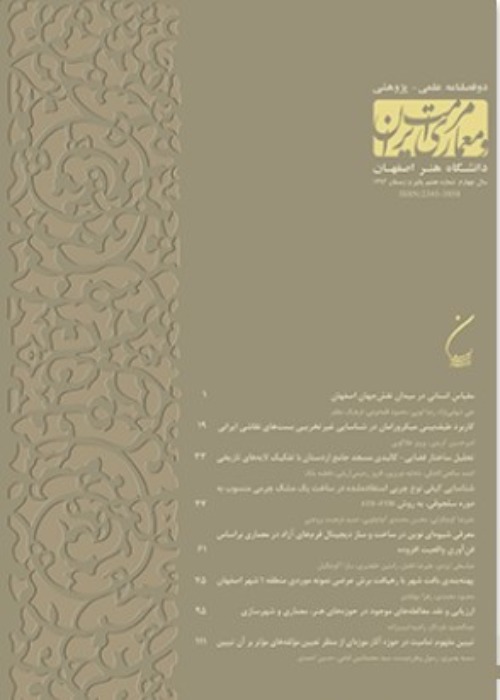Study of Historical and constructional evolution of SAVE JAME mosque
Abstract:
SAVEH JAME mosque was erected in different periods like Isfahan's and Ardestan's Jame. Consideration of these constructions provides a lot of information about Iranian architecture evolution. Therefore, scholars analyze and separate the historical and physical periods in these buildings to understand Iranian architecture and the process of conversions correctly, based on historical method. Main four historical terms is suggested for SAVEH JAME mosque. This category is based on some criteria like techniques of architectural structure and covering, materials, date of ornaments and coincidence with the behind structure, precedence and subsequence of fabrics and relation between them and old floors, comparative analysis with similar construction. Today some important parts of mosque that is retained consist in trapezoid yard (Sahn), southern Shabestan, western and eastern Shabestan with adobe columns and arc between them, Ahang arc, columns of northern Shabestan, rotunda and its forward Ivan, high western Ivan, construction with cross plan in southwest, the northeast minaret and various Mehrab and other decorations like Mehrab. Physical aspects of mosque are vague at first glance. Western Ivan, singular northeast minaret, entrances, ornaments of different terms are constituents without any relation with each other. This paper seeks to clarify the vague points by considering duration of mosque construction in different terms. Historical terms of mosque: 1. First term (primary mosque) (first Hegira century till the middle of fifth century) some adobe columns and some columns which are made from combination of adobe and mud are remained from this duration. Moreover, there are some adobe arcs that connect these columns to each other. 2. Second term (the middle of fifth Hegira century till early in seventh century) in this term, especially during Malekshah kingdom, some important parts of Saveh mosque was completed. Foundation of minaret was built. In addition two Navs were omitted then rotunda and its forward Ivan were constructed, adobe columns and arcs between them were invigorated by brick and some decorative elements were built by plaster on three northern columns in southern Shabestan. 3. Third term (seventh Hegira century till early in tenth century) three Navs were removed and a high Ivan is constructed about 11 meters in length. Furthermore, some main inner elevations were ornamented by brick. 4. Fourth term (early in tenth Hegira century till middle of thirteen century) in this term, the general structure of mosque did not change a lot. Some parts of construction (with structural problems) have been repaired. A cross plan building was constructed in southwest corner. Beside last arc (Tavizeh) and the next arch after it were omitted in west Ivan and a half dome was constructed there. A new tow-layered domed construction with square plan was constructed instead of an old domed construction with rectangular plan.
Language:
Persian
Published:
Maremat & memari-e Iran, Volume:7 Issue: 13, 2017
Page:
35
magiran.com/p1742529
دانلود و مطالعه متن این مقاله با یکی از روشهای زیر امکان پذیر است:
اشتراک شخصی
با عضویت و پرداخت آنلاین حق اشتراک یکساله به مبلغ 1,390,000ريال میتوانید 70 عنوان مطلب دانلود کنید!
اشتراک سازمانی
به کتابخانه دانشگاه یا محل کار خود پیشنهاد کنید تا اشتراک سازمانی این پایگاه را برای دسترسی نامحدود همه کاربران به متن مطالب تهیه نمایند!
توجه!
- حق عضویت دریافتی صرف حمایت از نشریات عضو و نگهداری، تکمیل و توسعه مگیران میشود.
- پرداخت حق اشتراک و دانلود مقالات اجازه بازنشر آن در سایر رسانههای چاپی و دیجیتال را به کاربر نمیدهد.
In order to view content subscription is required
Personal subscription
Subscribe magiran.com for 70 € euros via PayPal and download 70 articles during a year.
Organization subscription
Please contact us to subscribe your university or library for unlimited access!


